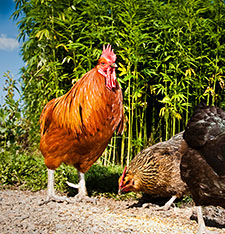Press release 2016-09-01 at 11:53
The Finnish Environment Institute’s and the Natural Resources Institute Finland’s bulletin 1 September 2016

Photo Veikko Somerpuro / Luke.
On 1 September, the Nagoya Protocol will come into force in Finland. It is an international treaty on the access to genetic resources and on fair and equitable sharing of benefits. Obligations arising from the Protocol and related regulations apply to all genetic resources of flora, fauna and microbes, when they are accessed for research and development activities.
The Protocol is aimed at ensuring the diversity of genetic material for future generations and safeguarding fair and equitable sharing of benefits between providers and users.
The Nagoya Protocol applies to all genetic resources except for human beings. It is valid in all the geographical areas of the parties to the Protocol, excluding Antarctica and high seas. It also excludes certain species included in the Annex I of the International Treaty on Plant Genetic Resources. The Protocol includes obligations concerning access to and utilisation of traditional knowledge held by indigenous people and local communities.
States will make the decisions on their own genetic resources
According to the Nagoya Protocol, states have full sovereignty over their own genetic resources. Each country will decide on access rules of their genetic resources, including benefit sharing. Countries also have an obligation to put their related legislation into force. Especially countries of high biological diversity require prior informed consent for the utilisation their genetic resources.
In Finland, the legislation is applied to the research and development activities of traditional knowledge of the Sami people when they are related to the utilisation of genetic resources. The access of domestic genetic resources for research and development activities will remain free and thus will not require prior informed consent. Most of the European countries plan to keep their genetic resources freely available.
Prior informed consent must be acquired from the genetic resources’ country of origin
Users researching the genetic or biochemical components of biological material must acquire a prior informed consent from the authorities of the country of origin of the genetic resource, if the provider country so requires. In addition to the prior informed consent, provider countries may require a contract that states how the possible benefits of the genetic resources are divided between the user and the provider country (mutually agreed terms).

Blueberry is health food and its gene pool have found many interested details. Kuva Erkki Oksanen / Luke.
The regulations concerning the availability and sharing of benefits of genetic resources by the countries that have ratified the Nagoya Protocol can be found from the international clearing-house mechanism: https://absch.cbd.int.
In Finland, the authorities supervising the use of genetic resources are Natural Resources Institute Finland (genetic resources of agriculture and forestry) and The Finnish Environment Institute SYKE (all the other types, e.g.wild genetic resources). Information about the contents of the law and instructions on how to follow the new regulations is available on a website as of 1 September: http://www.biodiversity.fi/geneticresources.
More information
Senior Adviser Katileena Lohtander-Buckbee, Finnish Environment Institute SYKE (tel. +358 (0)29 5251 390, firstname.lastname@ymparisto.fi
Senior Researcher Mari Rusanen, Natural Resources Institute Finland (Luke), tel. +358 (0)29 532 5477
firstname.lastname@luke.fi